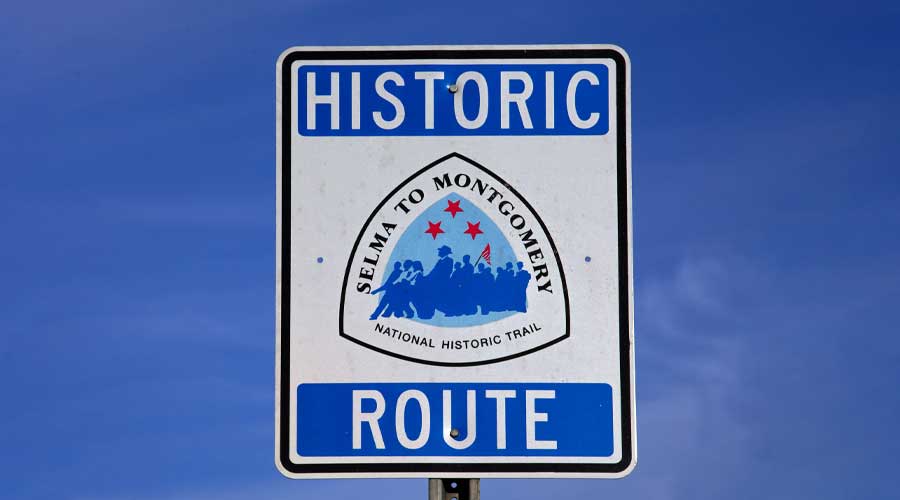A picture of the National Historic Trail sign by Carol M. Highsmith is licensed under Wikimedia Commons.
For nearly 100 years, February 1st has marked the beginning of African American History Month in the United States. Also called Black History Month, this time is meant to honor and celebrate the achievements and contributions of Black Americans throughout history. While Black History Month is an important observance, it’s critical for us to recognize, learn about and honor Black history beyond the month of February.
The U.S. Civil Rights Trail
There are few better ways to immerse yourself in Black American history than by visiting locations along the U.S. Civil Rights Trail. With sites spanning states across the country, the route includes critical locations where Black Americans changed history for the better.
This project was the brainchild of state tourism director Lee Sentell and was created in partnership with several state tourism agencies. It officially opened in 2018 with 120 sites across 14 states, a majority of which are located in the South.
The trail was created to give visitors a tangible way to learn about and experience Black history. By standing in the same spots where significant events took place that forever changed the course of U.S. history, we can begin to truly appreciate the heroic efforts and sacrifices of those that came before us.
What Historical Sites Does the Trail Highlight?
The Civil Rights Trail includes historically significant locations such as churches, courthouses, museums, memorials and national parks. But, as history and the story of our nation continue to evolve, so does the U.S. Civil Rights Trail, which has grown considerably since its inception — and likely will for years to come. In 2022, the trail expanded to include 14 more locations from the Civil Rights Era that were not as widely known as some of the initial regions, making information on these aspects of our history more accessible to all.
Some of the most notable historical locations include:
- The home where Dr. Martin Luther King Jr. was born in Atlanta, Georgia, and the new monument in Washington D.C. honoring him.
- The William Frantz Elementary School in New Orleans, Louisiana where schools were integrated for the first time by Ruby Bridges.
- 16th Street Baptist Church in Birmingham, Alabama, the location of three separate bombings.
- The National Museum of African American History and Culture in Washington D.C.
The preservation of these iconic sites was made possible by the hard work and generous donations from activists, government officials and philanthropists.
Robert F. Smith and Civil Rights Sites
Robert F. Smith is the Founder, Chairman and CEO of Vista Equity Partners (Vista), a leading global asset manager. At Smith’s core, he is a philanthropist who’s steadfastly dedicated to uplifting the human spirit. In addition to the many generous donations he has made throughout his career, Smith became the first African American to sign the Giving Pledge in 2017. The pledge is a promise that wealthy individuals make to give away a majority of their wealth to philanthropic causes over the course of their lifetime.
In regard to the pledge, Smith said “…on behalf of my family, I am privileged to join the Giving Pledge with a commitment to invest half my net worth—during my lifetime—to causes that support equality of opportunity for African Americans, as well as causes that cultivate ecological protection to ensure a livable planet for future generations.”
Smith has also made several important donations dedicated to preserving Black American history. In 2016, he made a personal gift of $20 million to the National Museum of African American History and Culture. A part of that gift funded the Robert F. Smith Explore Your Family History Center, a service that helps African American families learn how to trace back their lineages.
In 2019, Smith helped guide a donation made by the Fund II Foundation to help purchase Martin Luther King Jr.’s childhood homes in Atlanta. Initially anonymous, his gift made it possible for the National Park Service to preserve the homes as national historic sites for years to come.
Learn more about Smith and his philanthropic and entrepreneurial efforts on YouTube.
